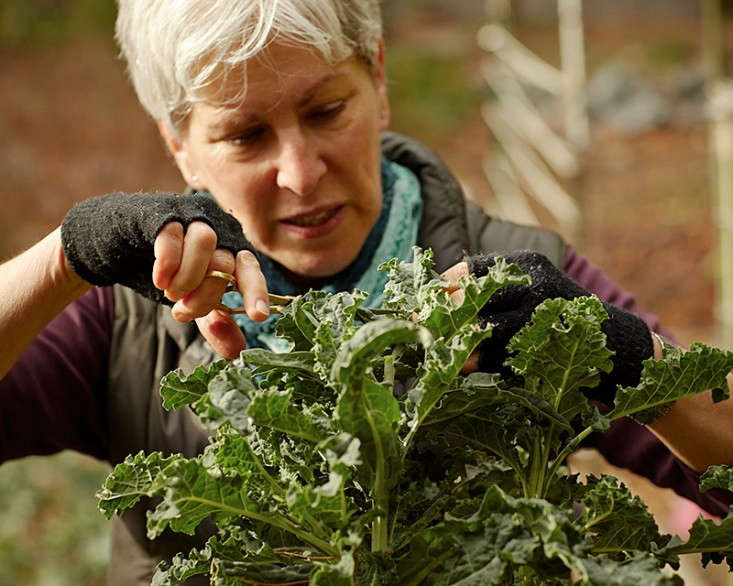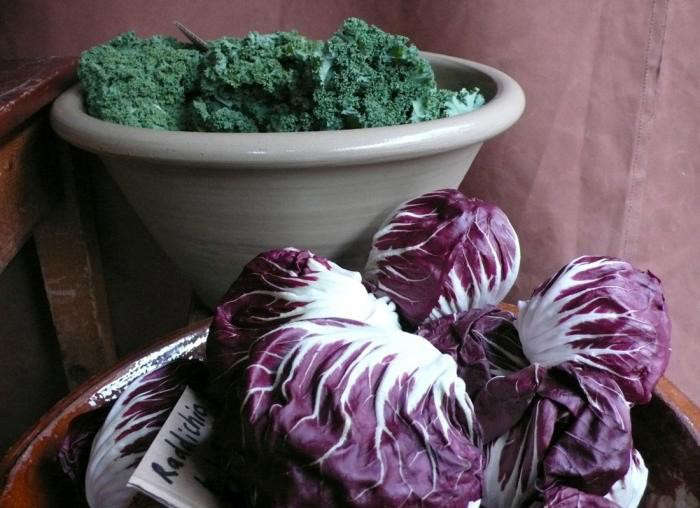If you want vegetable seedlings that are easy to grow, never go to the nursery just to browse. You may end up falling into the trap of buying whatever strikes your fancy—which is likely fine when you’re clothes-shopping, probably not a big deal when you’re grocery-shopping, but most definitely a disaster when you’re plant-shopping while ignorant.
That’s what happened when I found myself at a nice nursery and spontaneously decided to buy seeds and seedlings for my first vegetable garden. (I wrote about some of my misadventures here, here, and here.) What I should have done first is some sound research.
I’m writing this column to make sure you, and other beginner gardeners, don’t make the same mistake as I did. I asked world-famous vegetable lover Mollie Katzen, the cookbook writer behind the seminal vegetarian bible, The Moosewood Cookbook, for advice. Katzen, who grows vegetables year-round in her edible garden in Berkeley, California, suggested five favorites for a fail-safe starter vegetable garden.

“For me, the easiest things to grow are radishes, parsley, kale, arugula, and radicchio,” says Katzen. “The first two need some sun, but seem happy regardless. The last three are great in the shade and/or fog (of which I have much!) and also don’t mind the cold (short of frost, but even the frost doesn’t kill them).”
1. Radishes

So easy, a child could grow them from seed. So fast-growing, they’ll be ready to be harvested in as little time as three weeks. It’s no wonder that radishes make Katzen’s list of easy vegetables to grow. They do best in cool, moist, tilled soil, planted about half-inch deep; for best results, sow the seeds in spring or fall.
Tip: The key to a fresh, crispy radish is harvesting at the right time. A common mistake is pulling them out too late, when they’ve become tough and too spicy. The only way to ensure this doesn’t happen is to pull one out and check for taste before harvesting them all.
2. Parsley

OK, technically an herb. But have you ever seen a vegetable garden without parsley? It is a very adaptable plant and does well in both bright sun and partial sun conditions. But unlike radishes, parsley from seed is a slow starter. It can take up to three weeks before you see a sprout. Consider planting the seeds in little pots indoors about three months before the last spring frost, then planting the seedlings outdoors.
Tip: Parsley is a biennial (see The Garden Decoder: What Are ‘Biennials’?). In the first year, you can harvest its leaves; in the second, year it will bloom but you can still harvest the leaves, though they will be fewer and less flavorful; in the fall of the second year, you can harvest the root, which can be roasted, mashed, pureed—just like any other root vegetable. (Be sure to check out our Parsley Field Guide.)
3. Kale

Even though kale appears on all sorts of easiest-to-grow vegetable lists, I tried to grow kale once—and failed. But that’s because I made one crucial mistake: I planted it too close to the start of summer and my kale bolted. Make sure you plant kale in early spring or in the fall; hot weather encourages kale to bolt, which renders it nearly inedible. For best results, start seeds indoors about six weeks before the last frost to ensure they can mature outdoors while the weather is still on the cool side.
Tip: Harvest the outside leaves first, keeping a few in the center to encourage continued growth. (Find our field guide on growing kale here.)
4. Arugula

Like kale, arugula enjoys cooler temperatures, so it’s best to plant in early spring or fall. But unlike kale, it grows relatively quickly from seed, so you can sow directly in the garden. Once summer arrives, it will likely flower (bolt) and turn inedible rather quickly.
Tip: Like other leafy greens, it will grow fine in partial shade. (Find our field guide on growing arugula here.)
5. Radicchio

Sow seeds directly about two to three weeks before the last frost, and you’ll see seedlings as early as a week later. It takes about 80 to 90 days to mature into into a compact, baseball-sized ball. Like radishes, you’ll want to harvest them young before it turns bitter.
Tip: Radicchio also turns bitter when it doesn’t get enough water. Make sure to keep the soil moist by adding a layer of mulch and regular watering. (Go here for more growing information.)
N.B.: Featured photograph by Kendra Wilson, from Shopper’s Diary: Instant Vegetables from Rocket Gardens in Cornwall, UK.
Read more about my (mis)adventures in earlier installments of Your First Garden. See everything you need to know about planting a vegetable garden in our guide to Edible Gardens 101. And don’t miss:
- Everything You Need to Know About Edible Gardens
- Kale: A Field Guide to Planting, Care & Design
- The Best Vegetables You’ll Ever Taste












Have a Question or Comment About This Post?
Join the conversation (0)